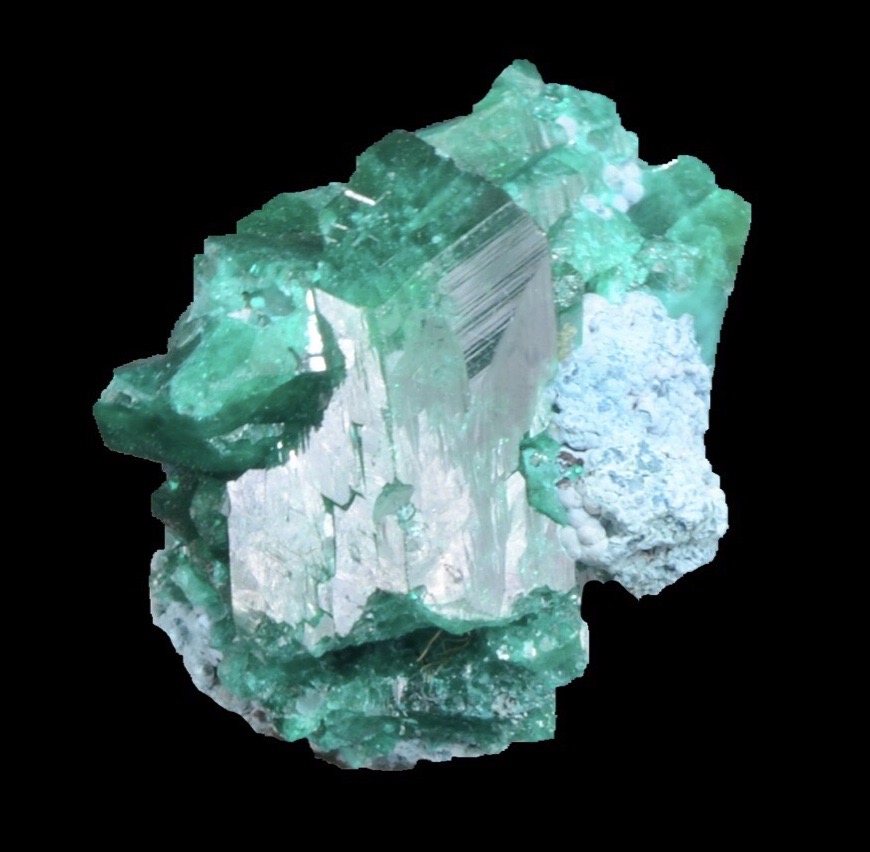Dioptase is a member of the cyclosilicate group. The mineral is noted for its intense bluish-green color and an often vitreous luster. This color originates from the oxidization of copper, present in the chemical composition of Dioptase.
Dioptase typically forms in transparent to translucent rhombohedral crystals. Crystals are typically six-sided and exhibit two perfect and one other strong cleavage directions. Dioptase has a trigonal crystal system. The chemical formula of dioptase is Cu6Si6O18·6H2O, reflecting the copper cyclosilicate structure of the mineral. Dioptase crystals are formed by rings of Si6 and O18 linked together by copper ions surrounded by (coordinated) oxygen and hydrous molecules.
Like many other secondary copper minerals, Dioptase occurs in the oxidized zone of copper mineral deposits. Localities of Dioptase include the Altyn Tube Mine of Kazahkstan and the Tsumeb Mine of Namibia. The latter locality produces highly desirable specimens sought after by collectors. Deposits of the mineral also occur in other arid localities, such as the deserts in the southwestern United States.
Dioptase is commonly associated with other copper minerals and cyclosilicates such as Chrysocolla.
 Dioptase, Plancheite from Kaokoveld Plateau, Kunene Region, Namibia
Dioptase, Plancheite from Kaokoveld Plateau, Kunene Region, Namibia
Properties
Mineral Class: Silicates - Cyclosilicates
Chemical Formula: Cu6Si6O18·6H2O
Crystal System: Trigonal
Hardness: 5
Specific Gravity: 3.28 - 3.35
References
"Dioptase", Mindat, Mindat.org ↗, 8 March 2020 https://www.mindat.org/min-1295.html ↗
